North Macedonia, a landlocked country in Southeast Europe, borders Greece, Albania, Bulgaria, Serbia, and Kosovo. It boasts rich history, diverse culture, and stunning landmarks. Skopje, the capital, blends Ottoman and modern influences, while Ohrid, a UNESCO site, is famed for its historic churches and pristine lake. The mountainous terrain offers excellent hiking. Visitors can explore ancient ruins, savour traditional cuisine, and immerse themselves in vibrant local festivals.
Location
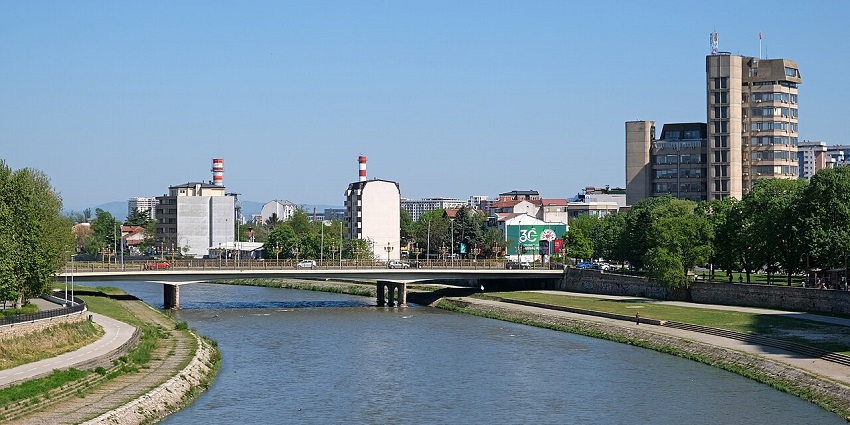
Photo: kallerna / Wikimedia Commons
North Macedonia is situated in the central Balkan Peninsula, covering an area of approximately 25,713 square kilometers. It has a continental climate with hot summers and cold winters. The country is surrounded by Greece to the south, Bulgaria to the east, Serbia and Kosovo to the north, and Albania to the west. Skopje serves as the political and economic hub, while Ohrid is renowned for its historical significance.
How To Reach
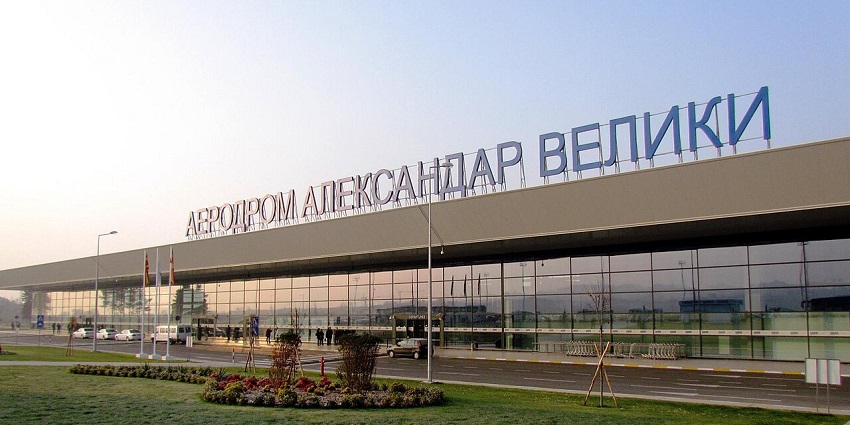
Photo: Hristina Dojcinova / Wikimedia Commons
There are several ways to travel to North Macedonia, and here’s how you can plan your journey:
By Bus: International bus services connect North Macedonia with neighboring countries. Buses operate from cities like Sofia, Belgrade, and Thessaloniki, offering affordable and convenient travel options.
By Train: Railway services link North Macedonia with Serbia and Greece. The main train station in Skopje provides connections to international and domestic destinations, making it a reliable choice for travellers.
By Air: Skopje International Airport is the primary gateway to North Macedonia, offering flights from major European cities. Ohrid St. Paul the Apostle Airport serves as an alternative for travellers visiting the southwestern region.
Best Things To Do In North Macedonia
Discover the best things to do in North Macedonia and explore its natural and historical wonders:
1. Hike To The Top Of Mount Ljuboten
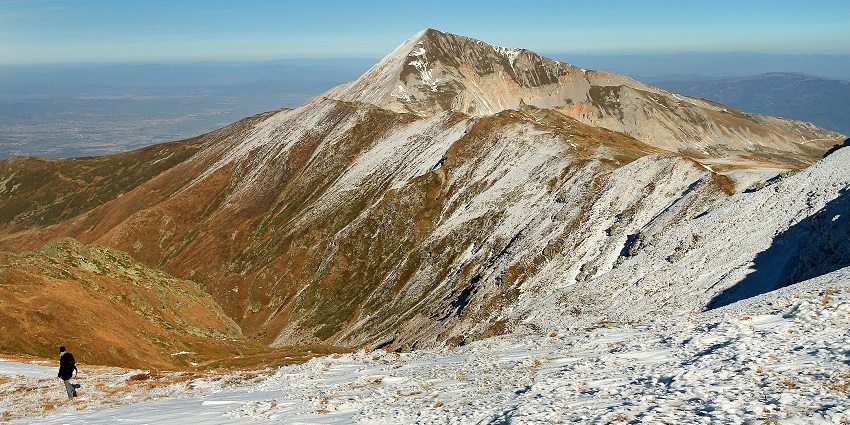
Photo: Ben Njeri / Wikimedia Commons
Mount Ljuboten, rising 2,498 meters within the Šar Mountains, attracts outdoor enthusiasts eager for a rewarding challenge. The ascent takes hikers through alpine meadows, rocky slopes, and diverse plant life. The summit reveals extensive views of neighboring mountain ranges and deep valleys. The trek varies in difficulty, with steep sections requiring endurance. Guided tours offer insights into the region’s geological features and local legends.
Best Time To Visit: June – September
2. Kayak Through The Stunning Matka Canyon
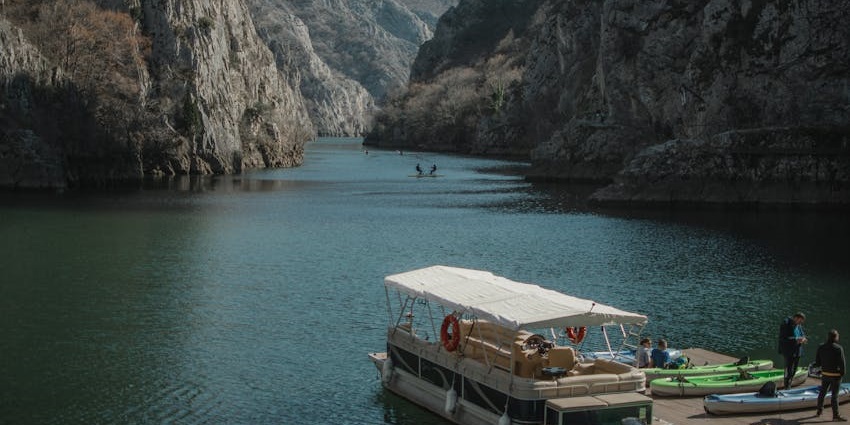
Photo: Atanasija Gulevska / Pexels
Matka Canyon, a short drive from Skopje, invites visitors to explore its waterways by kayak. The steep limestone cliffs create a dramatic setting, while the calm river allows for a relaxing yet engaging activity. Kayakers can glide past unique rock formations and enter hidden caves such as Vrelo, one of the deepest underwater caves in Europe. Along the way, visitors can spot native wildlife and visit medieval monasteries accessible only by water.
Best Time To Visit: April – October
3. Wander Through Ancient Macedonia In Heraclea
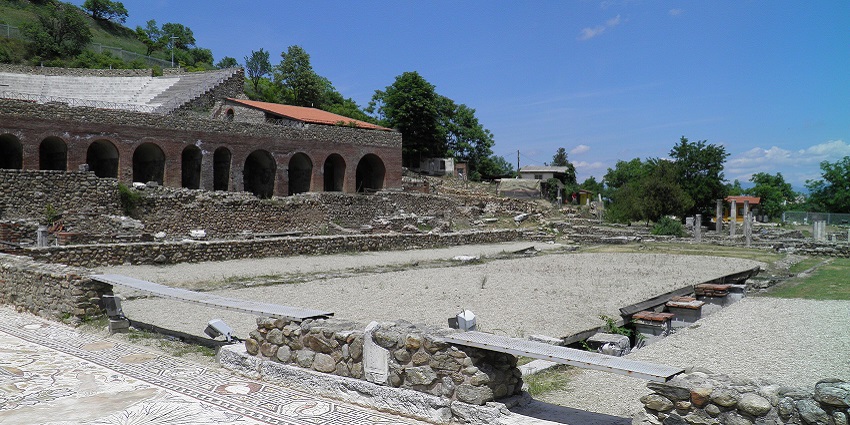
Photo: Carole Raddato / Wikimedia Commons
Heraclea Lyncestis, located near Bitola, allows visitors to step into the past with its well-preserved ruins from the Hellenistic and Roman periods. Founded by Philip II of Macedon, the city flourished as a cultural and trade hub. Today, visitors can admire the intricate mosaics depicting mythological scenes, explore the remains of an ancient theater, and observe the layout of early Christian basilicas.
Best Time To Visit: Spring and autumn for comfortable temperatures
Places To Visit In North Macedonia
You can explore North Macedonia’s top attractions, from historic sites to natural wonders, offering a mix of culture, adventure, and scenic beauty:
1. Mavrovo National Park
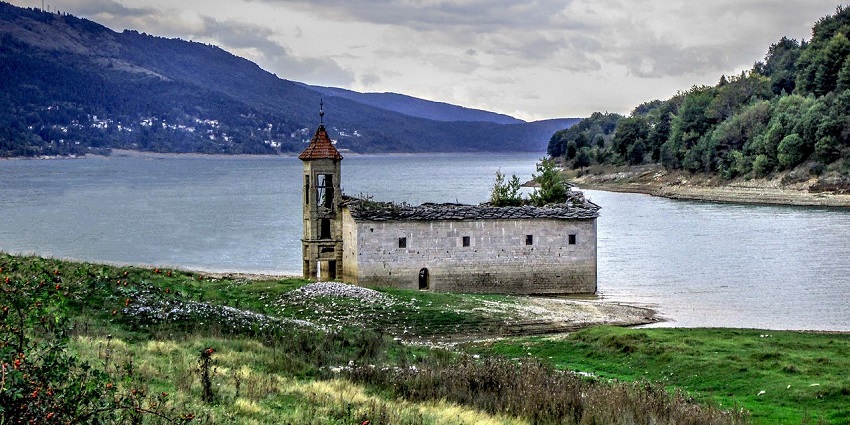
Photo: Делфина / Wikimedia Commons
Mavrovo National Park, the largest in North Macedonia, features glacial lakes, dense forests, and a rich variety of wildlife. The area offers excellent conditions for skiing in winter and hiking in warmer months. The submerged church of St. Nicholas adds historical significance, drawing visitors interested in photography and history. The park’s trails lead to scenic viewpoints, while its biodiversity includes rare bird species, making it a destination for nature lovers and adventure seekers.
Best Time To Visit: May – October for hiking; December – March for skiing
2. Ohrid
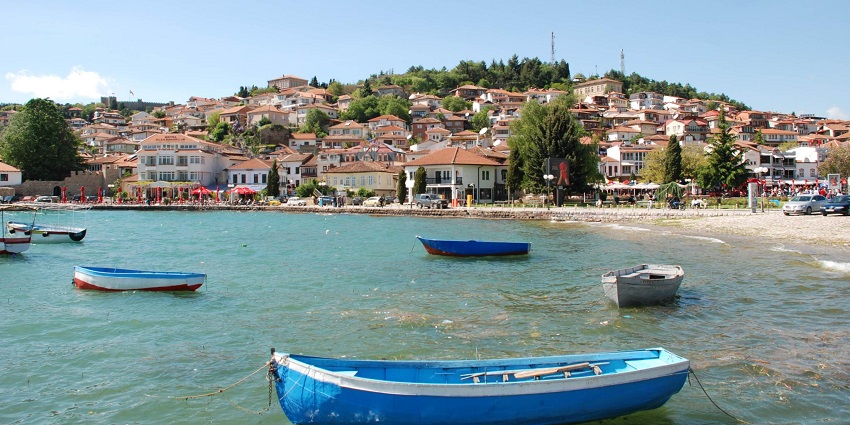
Photo: xiquinhosilva / Wikimedia Commons
Ohrid, a UNESCO World Heritage Site, preserves North Macedonia’s cultural and historical heritage. The town’s medieval churches, including the famous Church of St. John at Kaneo, highlight Byzantine architecture. Lake Ohrid, one of Europe’s oldest and deepest lakes, is a hub for water activities such as boating and swimming. The old town offers narrow cobbled streets lined with traditional houses and artisan shops.
Best Time To Visit: May – September
3. Kokino
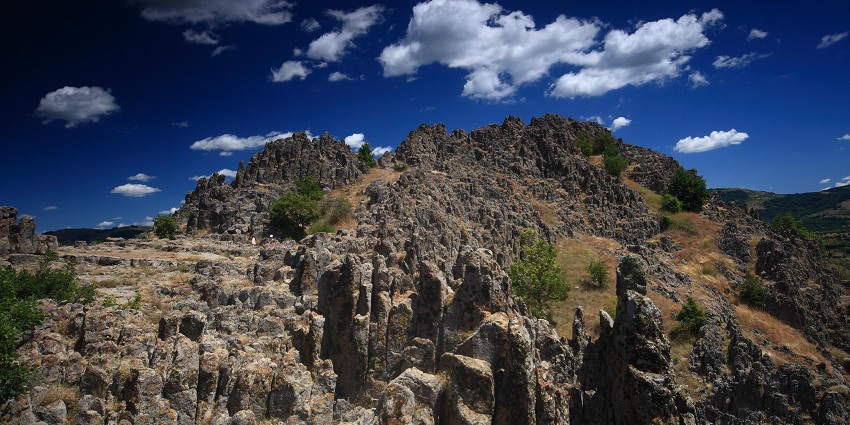
Photo: MartinDimitrievski / Wikimedia Commons
Kokino is an ancient megalithic observatory dating back over 3,800 years, offering insights into early astronomical practices. The site’s unique rock formations align with celestial movements, demonstrating early methods of tracking lunar and solar cycles. Archaeologists consider it one of the most significant prehistoric observatories in the world. Visitors can explore the rock platforms, which provide a panoramic outlook of the surrounding. The site’s history, combined with its scientific importance, attracts researchers, history enthusiasts, and those interested in archaeology.
Best Time To Visit: Spring and autumn for comfortable exploration
4. Stobi
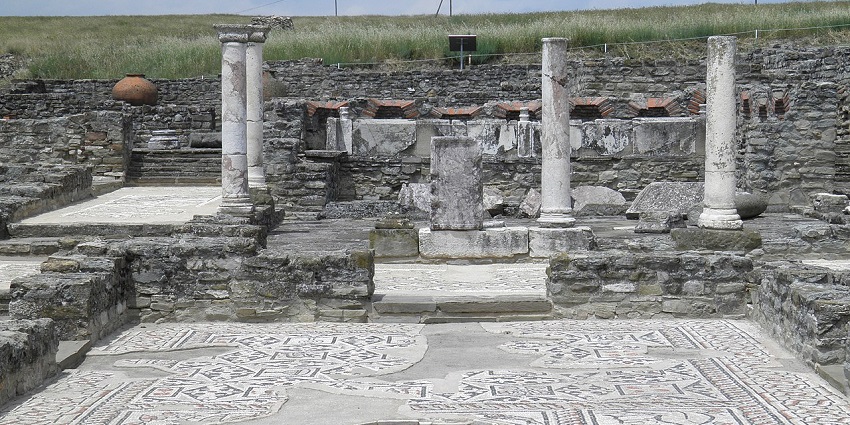
Photo: Carole Raddato / Wikimedia Commons
Stobi is a significant archaeological site featuring well-preserved Roman and early Christian architecture. The site includes a grand theatre, elaborate basilicas, and intricate mosaic floors depicting mythological scenes. Once a thriving city along ancient trade routes, Stobi played a key role in the region’s economic and cultural development. Visitors can walk through the ruins, imagining life in the past while discovering artifacts displayed throughout the site.
Best Time To Visit: March – June; September – November
5. Bitola
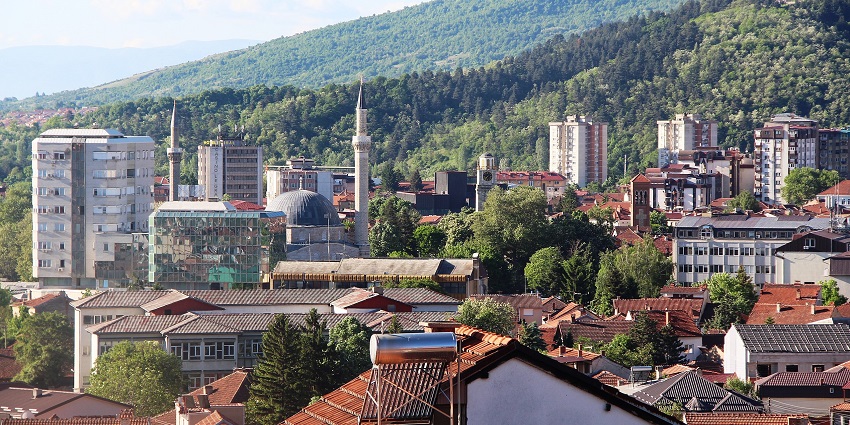
Photo: Yakov Ovadia, Sde Warburg, Israel / Wikimedia Commons
Bitola, North Macedonia’s second-largest city, blends history with modern urban life. Known for its Ottoman-era architecture, the city features elegant neoclassical buildings, ancient mosques, and the famous Širok Sokak pedestrian street, lined with cafes and shops. Heraclea Lyncestis, an ancient settlement with well-preserved mosaics and an amphitheater, offers a glimpse into Roman history. The city also has a thriving cultural scene, with museums, galleries, and festivals celebrating its heritage.
Best Time To Visit: April – October
Where To Stay

Photo: Max Vakhtbovycn / Pexels / Image For Representation Only
Accommodation options cater to different budgets and preferences. Skopje and Ohrid offer hotels with modern amenities, while smaller towns provide cozy guesthouses that give a more traditional experience. Many accommodations feature locally inspired interiors, adding cultural value to the stay. Rural areas have eco-lodges, ideal for those seeking a nature-focused retreat. Short-term rentals and boutique hotels in historic districts attract visitors looking for a blend of comfort and heritage.
Where To Eat

Photo: Ivana Sokolović / Wikimedia Commons
North Macedonia’s cuisine is influenced by Balkan and Mediterranean traditions, offering a mix of hearty and flavourful dishes. Local taverns serve specialties like Tavče Gravče, a spiced bean dish, and Ajvar, a roasted pepper spread. Bakeries sell fresh pastries, while markets provide locally produced cheeses and cured meats. Restaurants in major cities offer both traditional and international options, with menus featuring fresh ingredients sourced from nearby farms.
Best Time To Visit
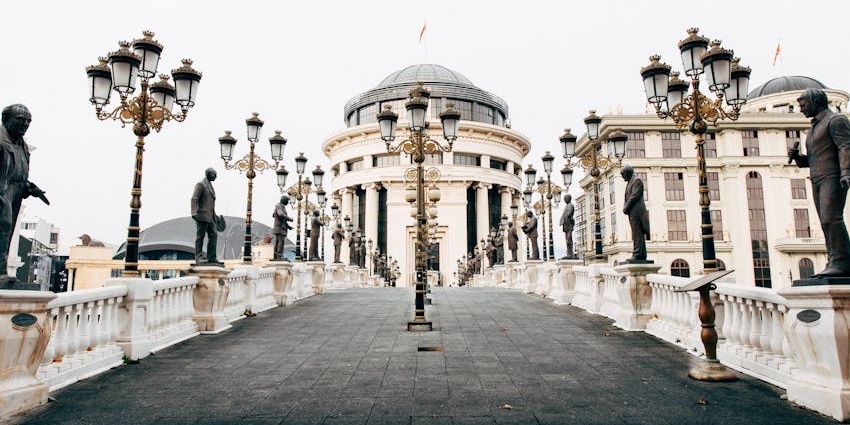
North Macedonia’s best travel seasons are spring and autumn, providing comfortable weather for exploring historical sites and enjoying nature. These months also feature cultural events, including traditional music and food festivals. Summer appeals to those interested in lake excursions and hiking, with warmer temperatures making outdoor adventures more accessible. Winter brings opportunities for skiing and snowboarding, particularly in Mavrovo.
Other Factors To Consider

Photo: Victor Freitas / Pexels / Image For Representation Only
Average Cost Of The Trip
A budget-friendly trip costs approximately ₹25,000 – 30,000 / MKD 16,444 – 19,733 per person, covering economy travel, budget stays, and essential sightseeing. Those opting for mid-range plans can expect expenses between ₹40,000 – 50,000 / MKD 26,310 – 32,888, including comfortable accommodation, guided tours, and better transport options. Luxury travellers may spend over ₹70,000 / MKD 46,043, enjoying premium hotels, personalised services, and exclusive experiences.
Tips For Travellers
- Carry local currency for small transactions.
- Public transport is affordable and reliable.
- Respect cultural sites and religious landmarks.
North Macedonia boasts a rich history, diverse landscapes, and vibrant traditions. Visitors can explore ancient monasteries, Ottoman-era bazaars, and fascinating archaeological sites. Outdoor adventures include trekking in scenic mountains and discovering pristine lakes. With Balkan and Mediterranean-inspired cuisine, the country offers a delightful culinary experience. Plan your journey with TripXL for an unforgettable exploration.
Cover Photo: Jakov Jovanoski / Pexels


 WhatsApp
WhatsApp
 Twitter
Twitter









